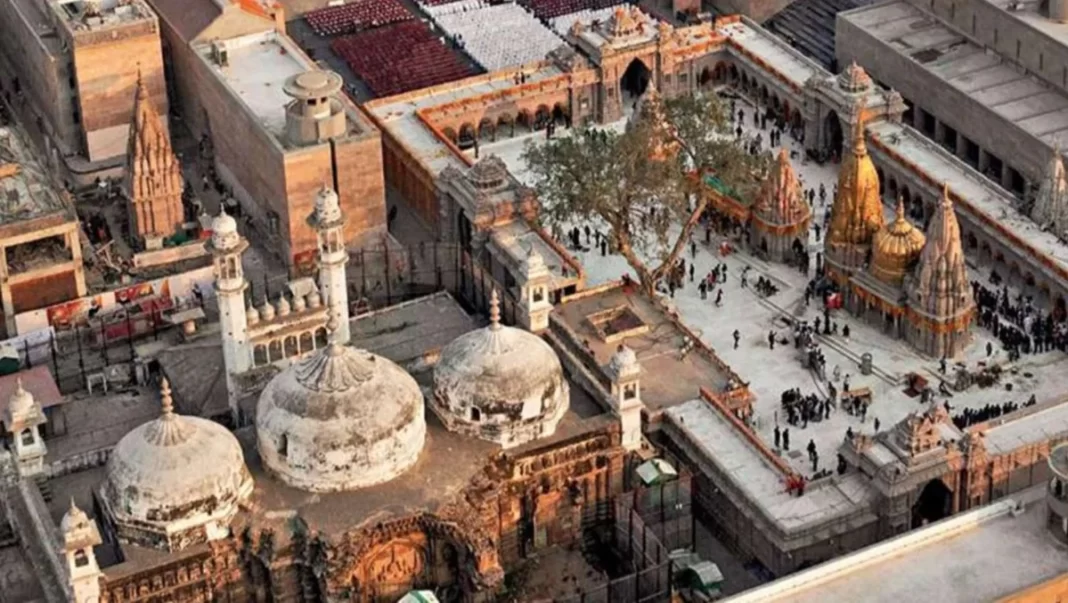The Gyanvapi mosque dispute took a new turn this week, with eleven persons requesting documents of the ASI report. Lawyers for the Hindus claim they would be “on the brink of victory” after the survey resolves the Shivling-fountain dispute. Earlier this week, the Varanasi court directed the Archaeological Survey of India to publish the findings publicly and provide both parties with printed copies.
“The ASI has stated that there was a big Hindu Temple previous to the building of the current tower. Advocate Vishnu Shankar Jain stated, “This is the ASI’s conclusive finding.”
A structure discovered on the property during a court-ordered study of the building adjacent to the Kashi Vishwanath shrine is at the heart of the dispute. The Hindus call it a ‘Shivling’, whereas Muslims call it a fountain. Following the discovery of the supposed Shivling, the ‘Wazu’ location was shut in 2022 by a Supreme Court ruling.
The Archaeological Department of India conducted an archaeological study of the Gyanvapi grounds in response to an administrative court order issued in July 2023. The ASI wanted to know if the mosque was built on top of a Hindu temple construction that already existed.
In January of this year, the Supreme Court granted a petition by women Hindu litigants seeking instruction for cleaning the whole ‘wazukhana’ region of the Gyanvapi mosque.
“Currently, the ‘wazu’ region is blocked. The place has been cleansed. It is currently in the custody of the Varanasi District Magistrate. We will be on the edge of triumph once the ASI survey results are in. “I am certain that we will see a time when Gyanvapi is free of this illegal invasion,” Jain said to ANI earlier on Thursday.
On Thursday, eleven individuals, including Hindus and Muslims, requested copies of the ASI assessment report on the Gyanvapi mosque complex, which adjoins the Kashi Vishwanath temple here, according to counsel for the Hindu claimants.
According to Hindu side lawyer Madan Mohan Yadav, the petitioners will likely receive the report on Thursday or Monday following a review of their submissions.
Following a district court decision dated July 21, last year, the Archaeological Investigation of India (ASI) conducted a thorough investigation of the Gyanvapi grounds to ascertain if the mosque was built over an existing Hindu temple building.
Meanwhile, the Varanasi district court on Wednesday requested that the ASI report be released to the public today and a printed copy be delivered to all parties.
Following the court’s order, the Hindu side’s attorney, advocate Hari Shankar Jain, stated that “there is proof that demonstrates that the temple had to be torn down to make way for the building of the mosque.”
Speaking to ANI on Wednesday, Advocate Jain stated, “There were several objections to making the ASI report public. However, after hearing both sides’ views, the learned court concluded that the report should be made available to both parties. The findings will be made public, and everyone will be aware of its contents.
On January 16, the Supreme Court granted a request by women Hindu petitioners seeking instruction to clean the whole ‘wazukhana’ of the Gyanvapi mosque wherein the alleged ‘Shivling’ was discovered and ensure that the space in issue was ‘hygienic’.
The ‘wazukhana’ region was blocked in 2022 as a result of a Supreme Court ruling after the discovery of a ‘Shivling’.
The structure, which was alleged to have been a ‘Shivling’ by the Hindus and a ‘fountain’ by the Muslims, was discovered on the mosque grounds on May 16, 2022, in a court-ordered assessment of the edifice close to the Kashi Vishwanath Temple.
The ‘Wazu’ location is central to the Gyanvapi mosque-Kashi Vishwanath temple issue in the case, with both parties claiming ownership of the edifice identified during the court-ordered study. (ANI)
Varanasi, Jan 25 (PTI) — Eleven persons, including Hindus and Muslims, sought documents of the ASI survey findings on the Gyanvapi mosque building bordering the Kashi Vishwanath temple on this day that is Thursday, according to counsel representing the Hindu claimants.

